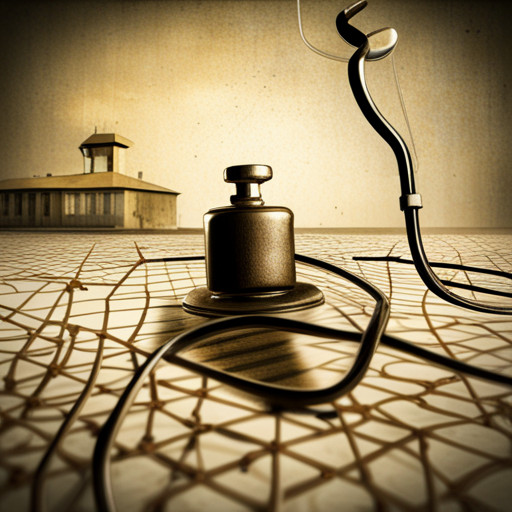The Quiet Perils of Prolonged Exposure to Carcinogens at Camp Lejeune
This article examines the insidious health risks associated with long-term exposure to carcinogens at Camp Lejeune.

It explores the scientific underpinnings of carcinogens, their effects on human health, and the specific dangers present at this military base.
Furthermore, it underscores these issues through personal narratives and considers potential policy interventions to address this ongoing public health concern.
Key Takeaways
- Carcinogens can be found in various sources such as tobacco smoke, radiation, chemicals, substances, and viruses, and can cause cancer in living tissue.
- Prolonged exposure to carcinogens, like those found at Camp Lejeune, can lead to multiple health issues including lung cancer, leukemia, breast cancer, bladder cancer, kidney disease, and liver disease.
- Genetic variations can make individuals more susceptible to developing diseases after exposure to carcinogens, highlighting the importance of personalized prevention strategies and treatments.
- Stringent regulation, effective communication of potential health risks, and policy reform are necessary to address the contamination crisis at military bases and prevent environmental exposure to carcinogens.
Understanding Carcinogens and Their Effects on Health

Carcinogens, substances capable of causing cancer in living tissue, have been linked to significant health risks when individuals are exposed to them over prolonged periods. Exposure can occur through various carcinogen sources such as tobacco smoke, radiation, certain chemicals and substances, and even some viruses.
Tobacco smoke remains one of the most common sources of carcinogens. It is estimated that it contains over 60 different carcinogenic compounds. Industrial exposure is another significant source where workers may come into contact with harmful substances such as asbestos, benzene, or certain pesticides. Moreover, dietary choices including consumption of processed meats or alcohol also introduce potential carcinogens into the body.
The impact on health due to these toxins cannot be overstated. Carcinogens can cause changes in cellular metabolism or induce DNA damage directly leading to the growth of cancerous cells. Often this risk escalates with the duration and intensity of exposure.
Protective measures against these deleterious effects involve both individual actions and policy regulations. On an individual level, making healthier lifestyle choices like quitting smoking or reducing alcohol intake can decrease personal risk considerably. Using protective equipment at workplaces dealing with hazardous substances also serves as a preventive measure.
On a larger scale though, there needs to be stringent regulation regarding industrial emissions and water contamination by governing bodies worldwide since environmental exposure often goes unnoticed until detrimental health effects become apparent.
The Long-Term Health Implications of Exposure to Carcinogens

Long-term health implications associated with the ingestion of harmful substances at military bases include a variety of cancers and other diseases. Studies have shown that prolonged exposure to carcinogens, such as those found in contaminated drinking water at Camp Lejeune, can result in multiple health issues including lung cancer, leukemia, breast cancer, bladder cancer, kidney disease and liver disease among others.
Carcinogen detoxification strategies are critical to mitigating these long-term impacts. These strategies involve reducing exposure to harmful substances and enhancing the body's natural detoxification processes. This includes maintaining a healthy diet rich in antioxidants and regular exercise which helps eliminate toxins from the body.
However, these strategies may not be sufficient for all individuals due to genetic susceptibility factors. Some individuals possess certain genetic variations that make them more susceptible to developing diseases after exposure to carcinogens. For instance, polymorphisms in genes responsible for DNA repair or xenobiotic metabolism can increase an individual's risk of developing cancer upon exposure to carcinogens.
Understanding these genetic susceptibility factors is crucial as it allows for personalized prevention strategies and treatments. It also underscores the importance of early detection and regular monitoring for individuals who have been exposed to carcinogens over a long period.
The Hidden Dangers at Camp Lejeune: A Closer Look

Hidden dangers lurking at military bases, specifically those related to health risks from contaminated drinking water, warrant a comprehensive examination. The infamous case of Camp Lejeune provides an illustrative example of the severe consequences that can stem from such contamination sources.
From 1953 until 1987, thousands of military personnel and their families were unknowingly exposed to carcinogenic substances in the camp's drinking water. These substances included trichloroethylene (TCE), tetrachloroethylene (PCE), vinyl chloride, benzene and other compounds – all confirmed or suspected human carcinogens. The contamination originated from leaking underground storage tanks, industrial spills and waste disposal sites within the base.
The issue raises serious questions about military accountability. The Marine Corps has acknowledged they were aware of this contamination by late 1984 or early 1985; however, no immediate action was taken to inform residents or provide alternative safe drinking water sources. It took another two years for the contaminated wells to be shut down completely.
Long-term health studies have since revealed a probable association between exposure to these toxins and several kinds of cancer and other diseases among former residents of Camp Lejeune. This includes male breast cancer – a rare disease in men – as well as leukemia, bladder cancer and birth defects.
Personal Stories and Experiences: The Human Impact at Camp Lejeune

Individual accounts and narratives offer a poignant insight into the human impact of contaminated drinking water at military bases, detailing the personal struggles and health challenges experienced by those affected. These survivor narratives from Camp Lejeune serve as an invaluable source of information about the adversity they faced due to long-term exposure to carcinogens in their drinking water supply.
Survivor narratives reveal that many inhabitants developed severe illnesses such as cancer, kidney disease, and neurological disorders. These health issues were often accompanied by emotional trauma due to prolonged stress, uncertainty, and loss. For example, several individuals described bouts of anxiety or depression triggered by their deteriorating health condition or the death of loved ones who also resided on base.
An examination of these stories reveals a common thread: confusion followed by anger upon discovering that their ailments could be traced back to contaminated water consumed while living at Camp Lejeune. Many survivors expressed frustration with how authorities handled the situation; specifically citing delays in acknowledging contamination levels and insufficient communication regarding potential health risks.
The emotional trauma experienced by survivors is further exacerbated by subsequent difficulties navigating healthcare systems for treatment and compensation. The bureaucratic maze can be daunting for those already grappling with serious illness, adding another layer of distress to an already challenging situation.
Policies and Solutions: Addressing the Carcinogen Crisis at Camp Lejeune

Efforts toward policy reform and the implementation of remedial measures are key in addressing the contamination crisis at military bases, focusing particularly on assuring clean drinking water and providing adequate healthcare for affected residents. This necessitates an intense evaluation of past actions, current conditions, and anticipated future needs to create comprehensive strategies.
Legislative action plays a critical role in tackling this issue. Laws such as the Camp Lejeune Families Act of 2012 provide medical care to veterans and their families affected by contaminated water at Camp Lejeune. Such legislative measures are vital in recognizing the long-term impacts of exposure to carcinogens and ensuring that those impacted have access to necessary health services.
Furthermore, initiatives like The Comprehensive Environmental Response, Compensation, and Liability Act (CERCLA) contribute significantly towards cleaning up sites contaminated with hazardous substances. However, achieving effective remediation requires strict adherence to these regulations alongside continuous monitoring.
Treatment alternatives complement these legislative efforts. Advanced technologies can be used for detection and removal of pollutants from groundwater sources. Techniques such as activated carbon filtration or reverse osmosis systems are beneficial in removing volatile organic compounds (VOCs), one of the primary contaminants identified at Camp Lejeune.
Moreover, healthcare options need expansion beyond traditional treatment methods for individuals exposed to carcinogens over prolonged periods. Tailored therapeutic approaches could include specialized oncology services or innovative treatments targeting specific types of cancer linked with exposure to particular contaminants.
Frequently Asked Questions
How Were the Carcinogens at Camp Lejeune First Discovered?
The discovery of carcinogens at Camp Lejeune primarily involved the application of sophisticated detection methods and observation of unusual exposure symptoms among the base's residents, prompting comprehensive environmental investigations.
What Measures Are Being Taken to Prevent Similar Situations at Other Military Camps?
Preventive measures at other military camps include rigorous military decontamination protocols and ongoing health monitoring to detect potential harm from environmental contaminants, thereby avoiding situations identical to that experienced at Camp Lejeune.
How Could the Prolonged Exposure to Carcinogens at Camp Lejeune Have Been Avoided?
Avoidance of prolonged exposure to carcinogens at Camp Lejeune could have been achieved through stringent identification and control of carcinogen sources, coupled with the implementation of robust preventive policies and regular health screenings.
Have There Been Any Similar Cases Like Camp Lejeune Elsewhere?
Indeed, similar global carcinogen cases have been reported, underscoring the need for environmental accountability. Instances include contamination in industrial regions and military bases globally, paralleling the events witnessed at Camp Lejeune.
Are There Any Current Lawsuits Related to the Carcinogenic Exposure at Camp Lejeune?
Legal implications persist regarding carcinogenic exposure at Camp Lejeune, with multiple lawsuits currently in progress. These cases aim to ascertain compensation possibilities for those adversely affected by the hazardous environment they were subjected to.
Conclusion
In conclusion, prolonged exposure to carcinogens at Camp Lejeune poses significant health risks. The long-term effects of these hazardous substances demand immediate attention and effective solutions.
Critical examination of personal experiences reveals the profound human impact and underscores the urgency for policy intervention.
A comprehensive strategy is essential to address this public health crisis, emphasizing preventive measures, remediation efforts, and robust healthcare support for affected individuals.

This post has been generated by AI and was not reviewed by editors. This is Not legal advice. Please consult with an attorney.




